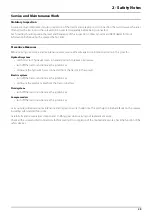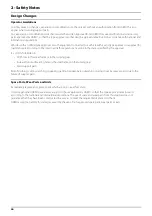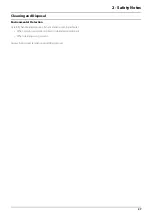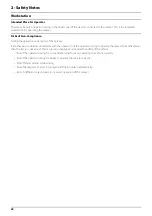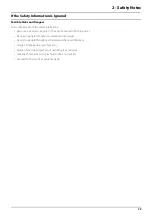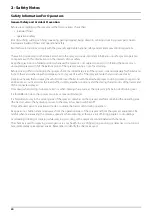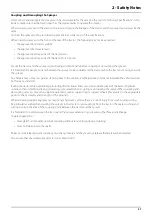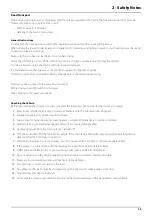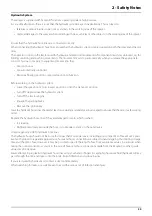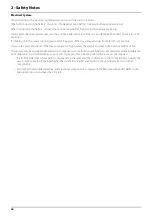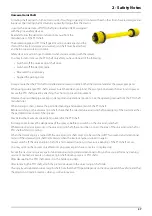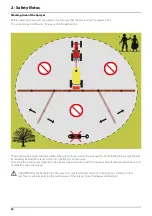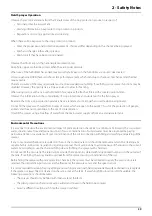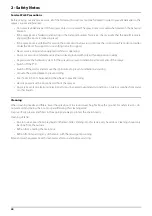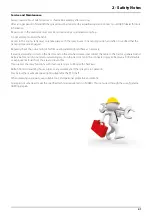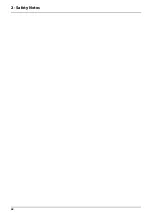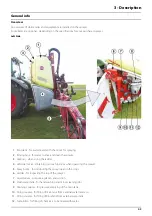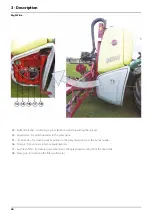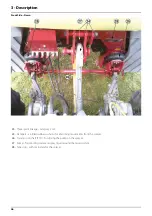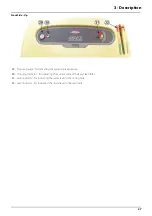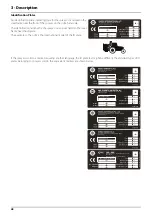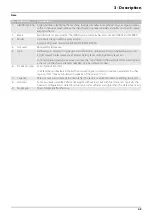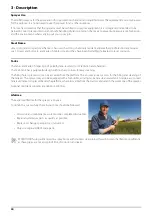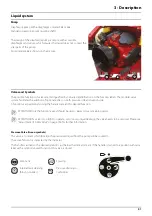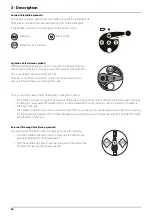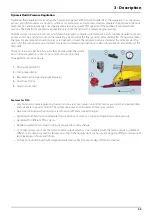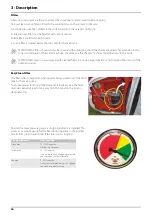
2 - Safety Notes
39
Field Sprayer Operation
Observe the recommendations from the manufacturer of the crop protection product in respect of:
•
Personal protective equipment
•
Warning information on exposure to crop protection products
•
Regulations on dosing, applications and cleaning.
When there will be exposure to the crop protection product:
•
Wear the proper personal protective equipment - this may differ depending on the chemical being sprayed.
•
Wash and change clothes after spraying
•
Wash tools if they have been contaminated.
Observe the information in the national plant protection law.
Keep hoses, pipes or other lines closed, when they are under pressure.
When use of the TurboFiller has ended, make sure that all valves on the TurboFiller are closed / deactivated.
Only use genuine HARDI hoses and hose clamps for replacement, which stand up to chemical, mechanical and thermal
requirements.
The rated volume of the spray liquid tank must not be exceeded during filling. If overfilling, some sprayer functions may be
disabled. However, the main tank is a little oversized to allow for foaming.
When using tractors with a cab with ventilation fans, replace the fresh air filters with activated carbon filters.
Observe the information on the compatibility of crop protections and substances for the field sprayer.
Be aware that some crop protection products have a tendency to stick together or settle when being mixed.
Do not fill the sprayer with water from bodies of water, which are open to the public. This is for the protection of people,
animals and the environment due to the risk of contamination.
Only fill the sprayer using a free flow of water from the mains water supply or from an external water tank.
Environmental Precautions
It is essential to reduce the environmental impact of plant protection chemicals to a minimum. Particularly the soil, subsoil
water, streams, lakes, flora and fauna must be in focus. Contamination of subsoil water must be prevented by paying
particular attention to avoidance of spot contamination of the soil in connection with filling and washing and parking of the
sprayer.
If any concentrated chemicals are spilled on the soil, the contaminated soil should be removed and sent for cleaning at a
capable facility. Follow local regulations regarding disposal. This must be done to avoid seepage of chemicals to the subsoil
waters. Avoid spillage - use the chemical filling device for filling the sprayer with chemicals.
Do not overfill the main tank. The rated volume inside the main tank is stated with large printed numbers on the outside of
the tank. If overfilling, the spray liquid could leak from the sprayer causing contamination of the soil.
Before filling the sprayer with plant protection chemicals, the sprayer must be calibrated to apply the precise dose rate
selected. The important input sensors are the flowmeter, the pressure sensor and the speed sensor.
It is recommended to establish a proper filling and washing location with hard, impenetrable surface drained to a receptacle
if the sprayer is always filled or cleaned on the same spot at the farm. If a washing/filling location is NOT available, the
following precautions should be taken:
•
The sprayer should only be filled with clean water at the farm
•
The plant protection chemicals must be added and mixed in the field to be sprayed
•
Select a different location each time the sprayer is refilled.
Summary of Contents for MEGA VPZ MASTER
Page 4: ...1 EU Declaration 4...
Page 10: ...Table of Contents 10...
Page 42: ...2 Safety Notes 42...
Page 68: ...3 Description 68...
Page 118: ...5 Operation 118...
Page 121: ...6 Maintenance 121 Lubrication Plan Boom Centre Close up of Glide Shoes to be Lubricated...
Page 172: ...8 Technical Specifications 172...
Page 176: ...Index 176...
Page 178: ...HARDI INTERNATIONAL A S Herthadalvej 10 DK 4840 N rre Alslev DENMARK...

